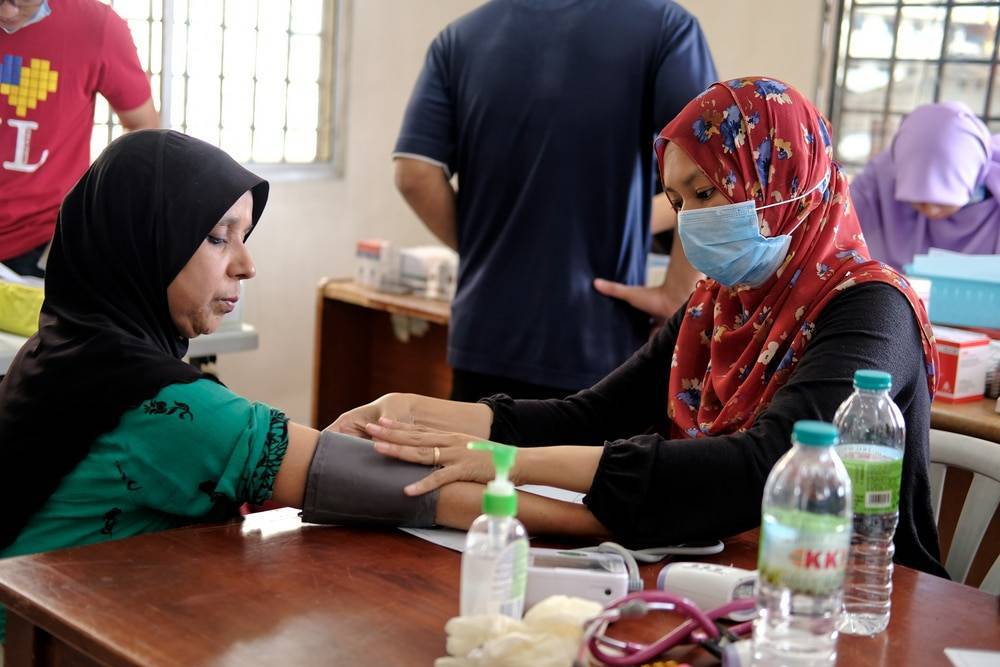The Malaysian Medical Association (MMA) has called on the government to consider implementing a shift system to prevent burnout and brain drain.
Dr Azizan Abdul Aziz, the current president of MMA, highlighted the importance of considering a three-shift system with flexi-allowance while commenting on the difference in working hours between doctors in Malaysia and doctors overseas.
Malaysian Doctors Are Overworked
The proposal was made during a meeting with the Ministry of Health (MOH) recently, using the European Working Time Directive (EWTD) as a guide. The EWTD requires an average of 48 hours for a normal working week. Doctors in the Malaysian public healthcare sector, especially the ones on active on-calls, tend to work an average of 60 to 84 hours a week, depending on available resources. Doctors in Australia typically work less than 40 hours a week.
Dr. Azizan said, ‘’Currently, in Malaysia’s public healthcare system, housemen work on a shift system until they complete their training and medical officers and specialists work on an on-call system where those put on active on-call duty work their normal working hours from 8 am to 5 pm and then begin their on-call hours from 5 pm to 8 am the next day. This is then followed by normal working hours from 8 am to 5 pm — a total of 33 hours straight.’’
Medical officers and specialists regularly work beyond their on-call hours due to heavy patient loads. Only certain departments permit post-on-call time off in the afternoons, at the discretion of the head of the unit. These long working hours increase the risk of medical errors.
Proactive Measures Necessary
Dr. Azizan stated that this current conundrum cannot be allowed to persist. She also noted that we cannot expect doctors to perform at optimal capacity while working unreasonably long hours. In fact, recent years have seen many doctors venture into the public sector or move overseas to pursue greener pastures.
This is not surprising, considering that many doctors have dedicated significant amounts of time, money, and effort to pursue their respective career paths. While the medical profession is noble, doctors remain human and bound by their commitments and circumstances. When faced with subpar financial compensation, unreasonable working conditions, and deteriorating health, many would choose an alternative that offers a better future. Additionally, numerous policy changes have complicated the working arrangements for public healthcare staff. It has left many disappointed and forced leave for better prospects.
Besides that, overworked healthcare providers tend to have an elevated risk of heart disease, stroke, and even death. The World Health Organisation’s (WHO) global analysis of health issues and deaths linked to long working hours demonstrated an increase in the number of deaths due to heart disease (42% increase) and stroke (19%). The study concluded that working 55 hours or more each week is associated with approximately 35% increased risk of stroke and 17% higher risk of ischemic heart disease. This is relative when compared to individuals who work 35 to 40 hours a week.
The Brain Drain Is Realshu
The number of doctors leaving the public healthcare sector has been rising. In addition to the factors mentioned above, poor career prospects has also contributed. Many doctors, especially contract doctors, realised that opportunity for specialisation is scarce and that they may be unable to do it locally. The recent turmoil over the local specialist programmes and parallel pathways to specialisation has only worsened the current situation.
Contract medical officers who left the public sector rose by 1,131% from 2017 to 2022. While the burden of the pandemic may have contributed to this statistic, doctors continue to exit the public sector post-pandemic. An estimated 890 specialists resigned from the public sector between 2018 and 2022.
Call To Action
Dr Muhammad Yasin, the spokesperson for Hartal Doktor Kontrak, stated that the numbers should be much higher. He added that the statistics provided by MOH of doctors leaving the public sector may not reflect the actual situation. He also suggested that government doctors be paid salaries and on-call allowances that are on par with the private sector.
Dr Muhammad suggested plans for individual development. He mentioned creating clear pathways by increasing opportunities for specialisation, postgraduate education, and involvement in research. Issues regarding overworking and workplace bullying need to be curbed as well.
Conclusion
This Malaysian healthcare system is in a precarious situation. It is currently held together by dedicated healthcare professionals who have chosen to do right by the nation and the Malaysian public. This has come at the expense of their own health, quality time with their loved ones, and future prospects.
The MOH needs to have more transparent conversations with healthcare professionals. Thereafter, they need to develop reasonable measures to mitigate the effects of the current issues plaguing the public sector.
This is definitely an arduous task and will require time, commitment, and understanding from all the parties involved.

